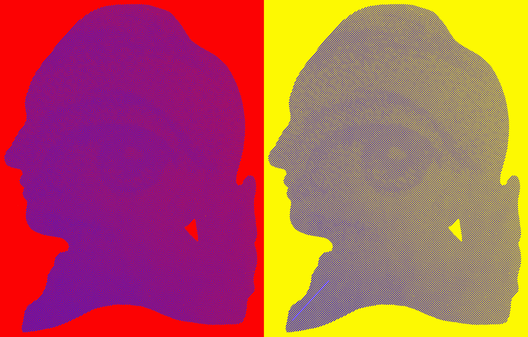Johann Wolfgang von Goethe1749–1832
Goethe was a poet and playwright of enormous popularity who also wrote on science and philosophy. His play Faust, in which a wandering conjuror sells his soul to the devil in return for superhuman powers, was an early influence on Sigmund Freud, and his belief that life was motivated by opposing forces like good and evil find their echo in Carl Jung. Goethe, in line with many Romantic philosophers, rejected the experimental approach to the study of nature because it was too constrained. In its place he proposed the astute and intuitive observation of natural phenomena, setting in train the method of phenomenology. This is best seen in his Farbenlehre (Theory of Colours, 1810), which contrasted his observational approach to colour with what he considered to be the physicalism of Newton. The purity of white light was taken to be fundamental and indivisible, rather than white being a mixture of different coloured lights. Goethe chose to observe and describe instead of experiment on colour vision. He distinguished between what he called physiological colours (the experience of colour) and physical colours produced by optical refraction. He did borrow a prism to repeat Newton’s experiment of separating the spectral components of white light, but failed to conduct it appropriately. Goethe’s theory of colour was never taken seriously by the scientific community, but his observations have rarely been challenged. He reported many novel phenomena, like positive and negative colour afterimages, irradiation, colour shadows, and colour blindness, in addition to contrast effects - both in the chromatic and achromatic domains. For example, the colour or brightness of a piece of paper can be changed by surrounding it by differently coloured or bright papers, as can its apparent size. He also studied the psychological and emotional effects of colour and, together with the his friend, the great poet Friedrich Schiller (1759-1805), he elaborated a diagram (“Temperamentrose” meaning “rose of temperaments”) in which colours were associated to the four humours of classical medicine and to temperaments. In the broader field of science he introduced concepts in comparative anatomy, like homologous parts, which were to play their part in the emergence of Darwin’s theory of evolution, and he made important observations particularly in botanic (among others he is credited with the invention of the term “morphology” in this field of study). Goethe was born in Frankfurt-am-Main and studied law, somewhat reluctantly, at Strasbourg. As a consequence of his literary work he was invited to serve in the House of Saxe Weimar to which he remained attached for most of his life. He was one of the mentors of the young Alexander von Humboldt, and he made electrophysiological experiments with him and with his brother Wilhelm. The pattern of contrasting blue, diamond shapes shown are rather like those in a figure from his Theory of Colours. The sizes of the elements vary very slightly, as can be seen by a good observer, to reveal an acute left eye - that of Goethe, enclosed in his silhouette. The blue shapes are all the same physically but appear different due to colour contrast induced by the red and yellow surrounds.
